Chinese Nationalist Party (KMT) Legislator-at-large Wang Jin-pyng (王金平) on Friday said that if elected president, he would launch negotiations between the government and opposition parties to coin a new term to replace the so-called “1992 consensus.”
“People in the KMT and those in the pan-blue and pan-green camps are in disagreement over the term’s definition,” Wang said.
“The DPP [Democratic Progressive Party] claims that it is synonymous with ‘one country, two systems,’ which is likely not convincing,” he said.
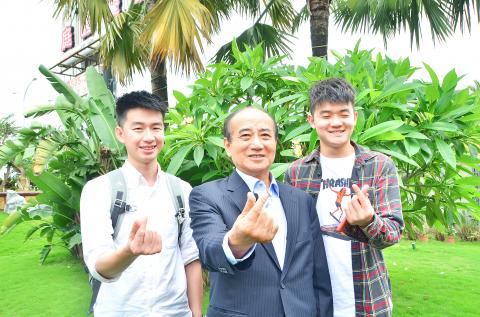
Photo: Wu Chun-feng, Taipei Times
The KMT and China each have their own interpretation of the term, with some KMT members advocating “one China, different interpretations” and Beijing touting “one China, same interpretation.”
“Any definition that involves ‘interpretation’ is not the answer,” said Wang, who announced his bid to run for president in March.
With the term sparking divisions domestically and across the Taiwan Strait, he would hold negotiations between the ruling party and opposition parties to discuss whether to replace the “consensus” with a new term, while leaving open the option to “keep using it,” he said.
Meanwhile, former president Ma Ying-jeou (馬英九) and former New Taipei City mayor Eric Chu (朱立倫) said that “one China” could only mean the Republic of China (ROC).
Hon Hai Precision Industry Co (鴻海精密) chairman Terry Gou (郭台銘), another KMT presidential hopeful, during an interview with CommonWealth Magazine said that he would never only say “1992 consensus,” but rather “1992 consensus and ‘one China, different interpretations.’”
“For the Zhonghua minzu [ethnic Chinese, 中華民族], there is one ROC and one People’s Republic of China,” Gou said.
Ma said that he took Gou to mean that the “one China” in “one China, different interpretations” refers to the ROC.
Chu, who in December last year announced that he would join the KMT’s presidential primary, urged all KMT members to heed the “consensus” as defined in the party’s “peace platform” as well as its “historical context.”
It is the KMT’s unwavering stance that “one China” refers to the ROC, he said.
Commenting on Gou’s remarks, National Taiwan Normal University professor of political science Fan Shih-ping (范世平) said that Gou’s latest cross-strait stance was not different from that espoused in the DPP’s Resolution on Taiwan’s Future or the “special state-to-state relationship” theory of former president Lee Teng-hui (李登輝).
China’s silence on Gou’s remarks could mean one of two things, he said.
One, it has been too preoccupied to respond, Fan said.
Two — which would be “alarming” — Gou has gained Beijing’s consent before making the remark, which would mean that the two sides had conspired together to formulate a plot to win the support of swing voters or borderline DPP supporters, he said.
The “1992 consensus — ” a term former Mainland Affairs Council chairman Su Chi (蘇起) in 2006 admitted that he made up in 2000 — refers to a tacit understanding between the KMT and the Chinese government that there is “one China,” with each side having its own interpretation of what “China” means.
Additional reporting by Hsiao Fang-chi
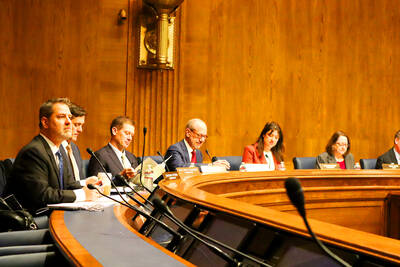
LIMITS: While China increases military pressure on Taiwan and expands its use of cognitive warfare, it is unwilling to target tech supply chains, the report said US and Taiwan military officials have warned that the Chinese People’s Liberation Army (PLA) could implement a blockade within “a matter of hours” and need only “minimal conversion time” prior to an attack on Taiwan, a report released on Tuesday by the US Senate’s China Economic and Security Review Commission said. “While there is no indication that China is planning an imminent attack, the United States and its allies and partners can no longer assume that a Taiwan contingency is a distant possibility for which they would have ample time to prepare,” it said. The commission made the comments in its annual
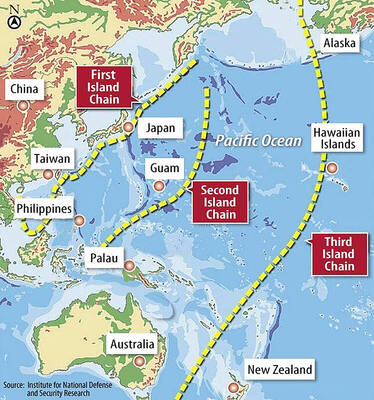
DETERMINATION: Beijing’s actions toward Tokyo have drawn international attention, but would likely bolster regional coordination and defense networks, the report said Japanese Prime Minister Sanae Takaichi’s administration is likely to prioritize security reforms and deterrence in the face of recent “hybrid” threats from China, the National Security Bureau (NSB) said. The bureau made the assessment in a written report to the Legislative Yuan ahead of an oral report and questions-and-answers session at the legislature’s Foreign Affairs and National Defense Committee tomorrow. The key points of Japan’s security reforms would be to reinforce security cooperation with the US, including enhancing defense deployment in the first island chain, pushing forward the integrated command and operations of the Japan Self-Defense Forces and US Forces Japan, as
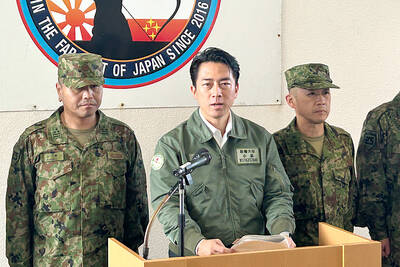
IN THE NATIONAL INTEREST: Deputy Minister of Foreign Affairs Francois Wu said the strengthening of military facilities would help to maintain security in the Taiwan Strait Japanese Minister of Defense Shinjiro Koizumi, visiting a military base close to Taiwan, said plans to deploy missiles to the post would move forward as tensions smolder between Tokyo and Beijing. “The deployment can help lower the chance of an armed attack on our country,” Koizumi told reporters on Sunday as he wrapped up his first trip to the base on the southern Japanese island of Yonaguni. “The view that it will heighten regional tensions is not accurate.” Former Japanese minister of defense Gen Nakatani in January said that Tokyo wanted to base Type 03 Chu-SAM missiles on Yonaguni, but little progress
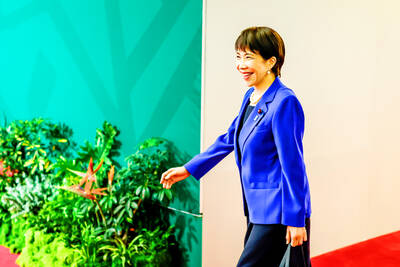
NO CHANGES: A Japanese spokesperson said that Tokyo remains consistent and open for dialogue, while Beijing has canceled diplomatic engagements A Japanese official blasted China’s claims that Japanese Prime Minister Sanae Takaichi has altered Japan’s position on a Taiwan crisis as “entirely baseless,” calling for more dialogue to stop ties between Asia’s top economies from spiraling. China vowed to take resolute self-defense against Japan if it “dared to intervene militarily in the Taiwan Strait” in a letter delivered Friday to the UN. “I’m aware of this letter,” said Maki Kobayashi, a senior Japanese government spokeswoman. “The claim our country has altered its position is entirely baseless,” she said on the sidelines of the G20 summit in Johannesburg on Saturday. The Chinese Ministry